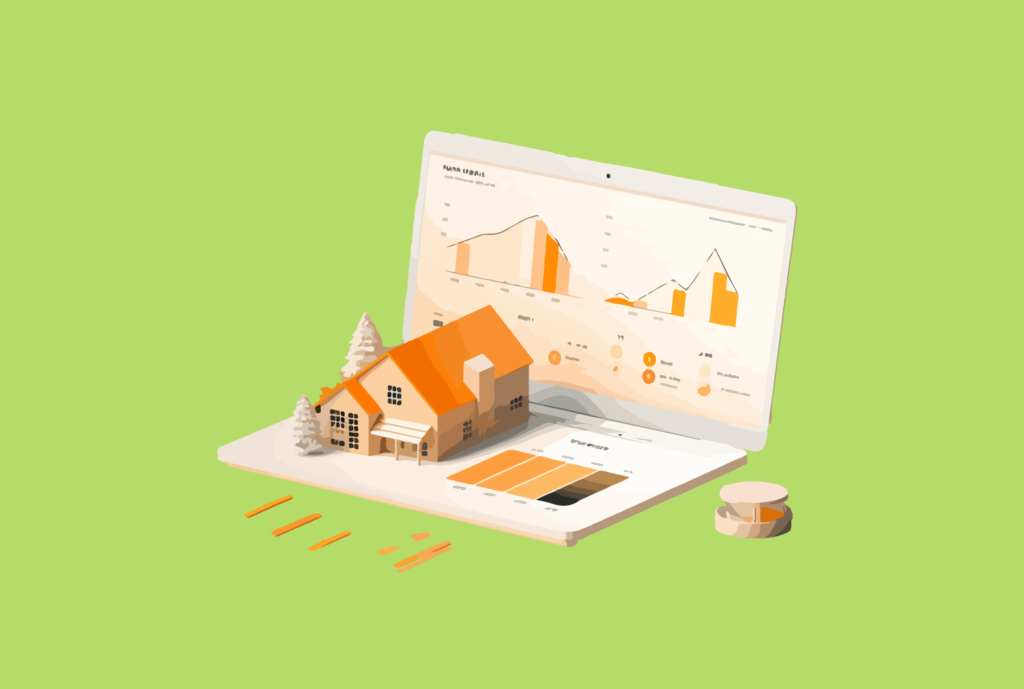
The Federal Reserve raised the federal funds rate 0.75 percentage points on June 15 trying to control the inflation rages which hit 8.6 percent in May. And the Fed revealed the possibility to keep raising rates in the following months before inflation shows the consistent signs of easing up, the 10-year treasury rate and mortgage rate zoomed higher which will make the rent price to surge throughout the year.
Over the first half of 2022, apartment rents have increased by a total 5.4 percent, according to the recent National Rent Report from Apartment List, and year-over-year rent growth currently stands at a staggering 14.1 percent, which is still notably faster than pre-pandemic. The report also shows the apartment rent in 97 of the nation’s 100 largest cities increased month-over-month in 2022, despite the virtually uninterrupted rent growth of Sun Belt markets¹ since the start of the pandemic, over the past six months, some of the fastest growth has been occurring in pricey coastal markets, such as, San Jose, New York City, Boston, and Seattle metros.
Meanwhile, single-family rents also gained a record 14% year over year in April 2022, referring to housing data provider, CoreLogic’s latest Single-Family Rent Index (SFRI), this is the 13th consecutive month of record-breaking annual gains. Again, every major market saw increases, but cities in the Sun Belt saw truly stunning numbers. Of the 20 metro areas, Miami posted the highest year-over-year increase in single-family rents in April 2022 at 40.8%. Orlando, Florida and Phoenix recorded the second- and third-highest gains at 25.8% and 17.8%, respectively.
Here are some reasons contributed to the surge of rent price:
Inflation Rages: from May 2021 to May 2022, the Consumer Price Index (CPI) for all urban consumers, the most common measure for inflation, increased 8.6 percent, the largest 12-month increase since the period ending December 1981. CPI represents changes in the prices of all goods and services purchased for consumption by urban households, including food, energy and other items (vehicles, shelter, medical care, etc.).
Weighted shelter takes up 32.77% of CPI, of which 7.8% is rent and 23.68% is private housing². Shelter prices rose 5.5 percent over the last year, the largest 12-month increase since the period ending February 1991. The significant increase on housing price and rent lifted up the inflation rate and meanwhile the inflation rages on the other hand also forced landlords to continuously raise rent.
Steeper Mortgage Rates: by the end of June, the average rate on a 30-year fixed mortgage is 6.00%, according to Bankrate.com and experts are forecasting that this 30-year, fixed-mortgage rate will vary from 5% to 7% by the end of 2022. The rising borrowing rates and high prices in the housing market are leading many buyers with rigid demand to give up, sales slid for the fourth consecutive month. Affordability issues faced by prospective home buyers are likely to get worse, so they have to wait to purchase and continue or turn to rent.
Low Supply and High Demand: A shortage of available existing homes was also a factor contributing to rent increases, according to CoreLogic. Apartment List also mentioned their national vacancy index stands at 5 percent, remaining well below the pre-pandemic norm. The rental vacancy rate from the U.S. Census Bureau went to the lowest level of 5.6% in 2021Q4 and 5.8% in 2022Q1 since 1985.
On the opposite side, now the demand for rentals is unprecedentedly high. The Millennials generation (age 30-49) is eager to have their own living space and the trend of remote work also makes people upgrade to bigger units. Invitation Homes Inc. said earlier this month that its rental rates have continued to grow at an even higher pace than last year through the first five months of 2022. Its homes are 98% occupied and resident turnover is at an all-time low.
Surging rent on the other hand is beneficial to Ark7’s investors who will receive stable dividends monthly with long term property appreciation to fight against inflation rage more proactively.
Footnotes:
¹The Sun Belt is a region of the United States generally considered to stretch across the Southeast and Southwest from the Atlantic to Pacific Ocean, roughly south of the 38th parallel. The 19 states in the Sun Belt include: Alabama, Arkansas, Arizona, California, Colorado, Florida, Georgia, Hawaii, Kansas, Louisiana, Mississippi, North Carolina, New Mexico, Nevada, Oklahoma, South Carolina, Tennessee, Texas, & Utah.
²Shelter Index is one of the largest parts of the CPI. Owners’ equivalent rent of residences (OER) and rent of primary residence (rent) measure the majority of the change in the shelter cost consumers experience. The CPI for shelter also includes lodging away from home and tenants’ and household insurance.
Owned housing units themselves are not priced in the CPI Housing Survey. Like most other nations’ economic statistics programs, the CPI program views owned housing units as capital (or investment) goods distinct from the shelter service they provide, and therefore not as consumption goods.
Source: U.S. BUREAU OF LABOR STATISTIC
